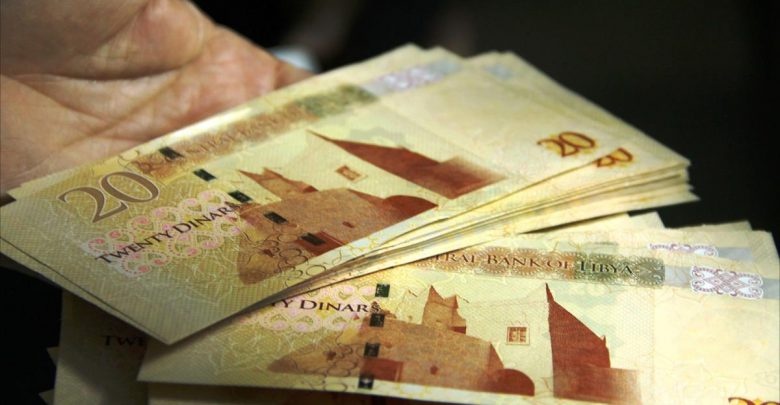By Robert Quartly-Janeiro FRGS
Director – EMEA, Export Action Global
By Robert Quartly-Janeiro FRGS
Director – EMEA, Export Action Global

As fighting continues south of Tripoli and the political endgame remains unknown, it can be easy to forget that Libya’s economic future is a bright one.
Not being naive there are of course challenges: too many people have died and the country’s position on the international stage has experienced sharp inclines and falls over the past decade. However, both domestically and within the international community, greater recognition is needed in order to see Libya not as a nation in crisis but one on an important transition.
For the wider MENA region and European Union alike, a prosperous Libya is not just desirable and obtainable in the medium term - even if that isn’t the prevailing view – it is vitally important for regional security and prosperity that Libya emerges as a wealthy, sustainable, and important regional actor.
Whilst economic performance in recent years has been declined at best and outright negative at worst; an economy that has seen its GDP fall from USD $81.8Bn early in the decade to $43Bn in 2018, mean unemployment of 18%, falling foreign direct investment (sub 2% of GDP in a shrinking economy), and challenging inflation - not helped by money being printed outside the country and shipped in - to name just a few indicators. Yet dive deeper and the fundamentals are much better.
As Richard Nield, Middle East consultant and economist explains “One thing often forgotten is how offshore production, operated by ENI, has remained constant in the face of fighting and political changes, and that prior at its peak the country was producing 1.6m barrels per day - so the production potential remains large.” To that end, Libya is losing tens of millions every day, the same revenue needed to rebuild it.
Moreover, in the pursuit of economic revival, building a diversified economy built on improved infrastructure, trade, and domestic spending is the path to travel, such as utilising Libya’s geographic position as a gateway to Africa and Southern Europe for trade; making the most of trade zone like Misrata, and incredible port capacity in Marsa al Brega and elsewhere – competing internationally on price and reliability to do so.
To support it, building ambitious railway infrastructure that extends not just internally from Tripoli to Benghazi – and the stops in-between - but outwards to Tunisia, Egypt, and the south is important for freight and repositioning underdeveloped and underutilised tourism potential. With Rome’s lasting architectural legacy waiting to be visited past plans for ‘tourist cities’ suitable for 1m visitors – 10x present numbers - needs to be dusted off.
Airports need full functionality again, modernised, and then new routes opened – allowing the UN to control them in would ensure stability and trust, and worth the controversy of doing so. Entirely new healthcare infrastructure implemented nationwide with R&DT facilities to back it up. In a thirst for a bright economic future the Nubian Sandstone Aquifer System must be supported with water desalination and investment across the country – groundwater won’t last forever.
Elsewhere, further renewable energy investment needs prioritising to ensure energy generation for the future as well as to encourage green technology firms to come to Libya, either invited or procured, to kick-start an emerging technology sector. A more prevalent digital economy is a must as internet penetration can only increase.
Encouraging oil majors to return will help finance economic change, and there is nothing to say that with the right investment at home and abroad across alternatives, liquid, and fixed assets that the Libyan Investment Authority (LIS) - buoyed by growth at home - cannot be as important as Norway’s wealth fund Norges in ensuring wealth is shared across the population for schools, education, and in peoples’ pockets in “helicopter money” – real spending leading to domestic demand.
Before the fear of paying for all this occurs, just think: Libya has one of the lowest debt to GDP ratios in the world, Africa’s largest oil reserves, a relatively young population, tremendous natural resources, and a determination to achieve more than the status quo. If it didn’t then what has been the point of this national transition?
Institutionally, organisations like the LIS are structurally important for the future as Nield further comments “If the 2011 uprising was the beginning of rehabilitation for Libya, then the institutions it needs to prosper, such as the National Oil Corporation or the National Bank of Libya, have remained intact.” As a 2006 IMF paper Levers for Growth favourably explains, countries like South Korea and Singapore had very weak institutions on their path to economic success – Libya is way ahead of those respective starting points.
Via a mix of investment, increasing trade, encouraging & protecting FDI, building great firms at home, greater goods-services from abroad, and putting wealth in Libyan’s hands will all push economic reform. In time, stability will return, tourists too, and economic performance will drive greater opportunity.
Libya’s economic future can be bright, and the transition to that end requires time, self-belief, enthusiasm, vision, and planning.
Disclaimer: The views and opinions expressed in this article are those of the writer, and do not necessarily reflect those of the Libya Observer